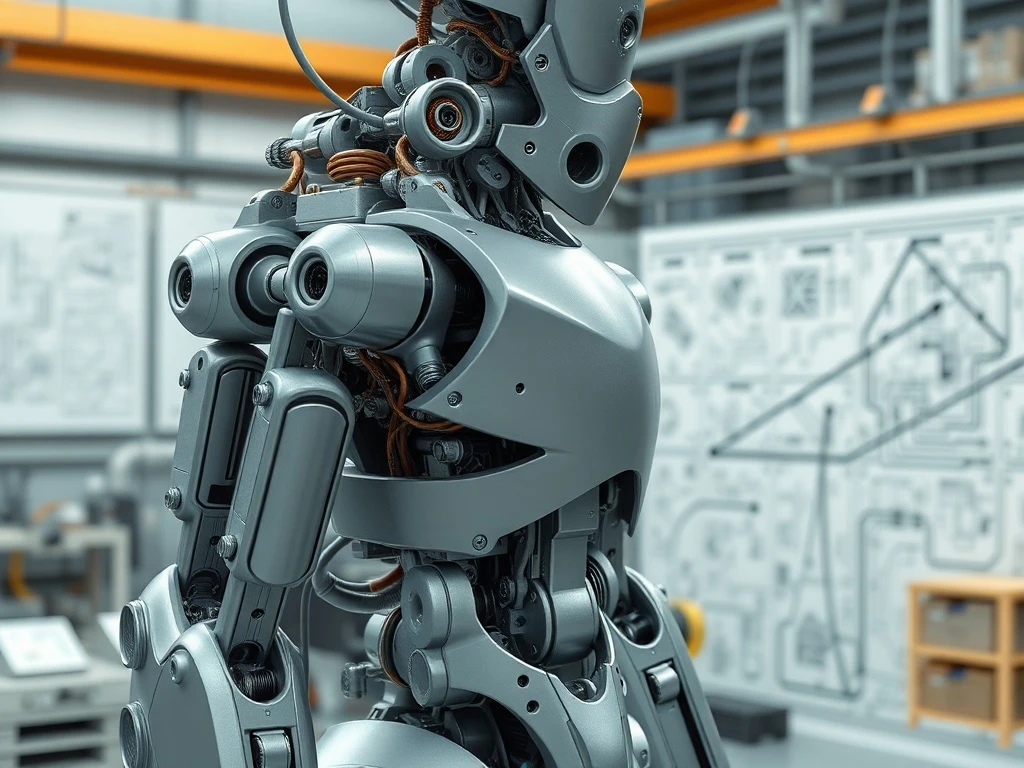The global humanoid robot market is experiencing unprecedented growth, projected to reach $50 billion by 2030. Investors and manufacturers are racing to understand which materials will drive this technological revolution forward. From Tesla’s Optimus to Boston Dynamics’ Atlas, the secret lies in strategic metal selection that balances weight, strength, and conductivity.
Lightweight Materials Dominate Humanoid Robot Market
The humanoid robot market demands extreme lightweighting without sacrificing durability. Magnesium and aluminum alloys lead this charge with exceptional strength-to-weight ratios. These materials enable robots to mimic human movement patterns while conserving energy. Major manufacturers increasingly prefer magnesium for critical components due to its shock absorption properties. Additionally, aluminum provides cost-effective solutions for mass production requirements.
Conductive Metals Powering Robot Intelligence
Copper and silver form the nervous system of modern humanoid robots. The expanding humanoid robot market requires efficient power transmission and thermal management. Copper wiring ensures minimal energy loss in motor systems, while silver contacts guarantee precision signal transmission. These materials enable complex computational processes and real-time data analysis. Consequently, demand for high-conductivity metals continues rising alongside robot sophistication.
Strength Requirements in Humanoid Robot Market
Steel remains indispensable for load-bearing components despite lightweight trends. The humanoid robot market requires exceptional durability for repetitive motion tasks. High-strength stainless steel and alloy steel provide necessary fatigue resistance. These materials undergo advanced heat treatment processes for enhanced performance. Furthermore, steel’s cost-effectiveness makes it ideal for structural frameworks and joint mechanisms.
Rare Earth Elements: The Hidden Game Changers
Rare earth materials represent critical components in the humanoid robot market supply chain. Neodymium, dysprosium, and terbium create powerful permanent magnets for precision motors. These elements enable miniaturization of power systems while maintaining high torque output. However, geopolitical factors and extraction challenges create supply chain vulnerabilities. Manufacturers are actively developing recycling technologies to address these concerns.
Investment Opportunities in Robot Materials
The booming humanoid robot market creates numerous investment avenues across metal supply chains. Key opportunities include:
- Lightweight alloy producers for structural components
- Copper and silver mining companies for electrical systems
- Specialty steel manufacturers for load-bearing parts
- Rare earth processing facilities for motor production
- Recycling technology firms for sustainable material sourcing
Future Trends Shaping Material Selection
Advanced material science continues evolving to meet humanoid robot market demands. Research focuses on composite materials combining multiple metal advantages. Smart materials with self-healing capabilities represent the next frontier. Additionally, nanotechnology applications promise enhanced conductivity and strength characteristics. These developments will further accelerate humanoid robot capabilities and market expansion.
Frequently Asked Questions
Which metal is most critical for humanoid robot movement?
Magnesium alloy proves most critical for movement systems due to its exceptional lightweight properties and shock absorption capabilities. It enables energy-efficient motion replication.
How does copper contribute to robot functionality?
Copper enables efficient power transmission through motor windings and circuit boards. It ensures minimal energy loss and effective heat dissipation during operation.
Are rare earth materials replaceable in robot manufacturing?
Currently, rare earth elements remain irreplaceable for high-performance permanent magnets. Research continues into alternatives, but no equivalent materials yet match their magnetic properties.
What makes aluminum ideal for mass-produced robots?
Aluminum offers optimal balance between cost, weight, and machinability. Its recyclability and forming characteristics make it perfect for high-volume production requirements.
How does steel contribute to robot durability?
Steel provides essential strength for load-bearing components and joints. Advanced coatings and heat treatments enhance its wear resistance and fatigue performance.
What are the supply chain risks for robot materials?
Geopolitical factors affecting rare earth availability, price volatility in copper markets, and manufacturing capacity constraints represent primary supply chain challenges.














